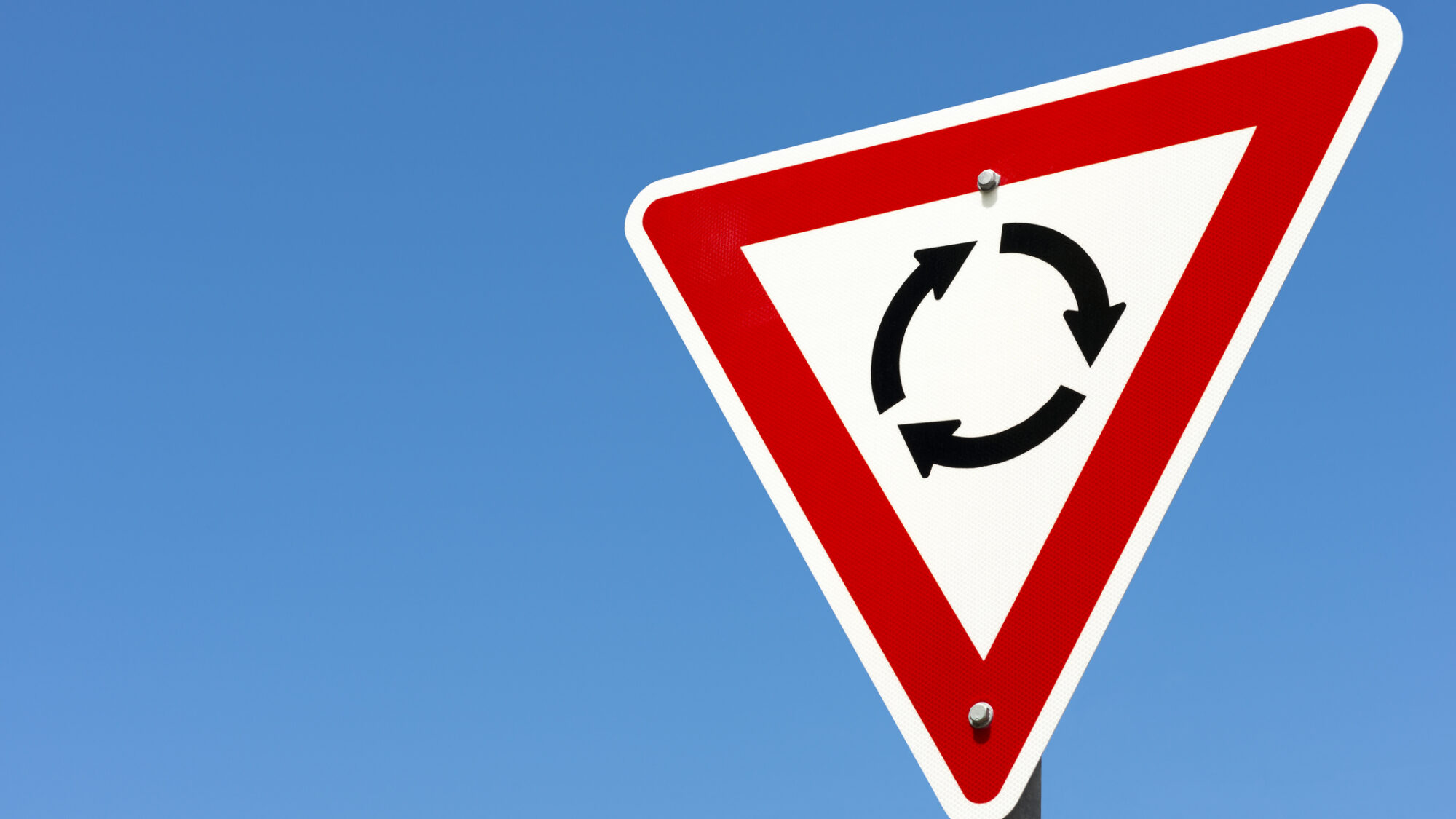Traffic circles and roundabouts are circular intersections where vehicles proceed in a counter-clockwise direction around a centre island. Alberta has been home to these types of intersections for decades, but you’ve probably been noticing more of them over the last few years.
“Roundabouts, which are circular intersections similar to traffic circles, are becoming more common in Alberta because they keep traffic flowing smoothly and force vehicles to slow down,” says Ryan Lemont, Manager of AMA Driver Education. “Plus, collisions in traffic circles and roundabouts are usually side swipes, which are typically much less serious than head-on or T-bone collisions that often take place at regular intersections.”
Road users often use the terms “traffic circle” and “roundabout” interchangeably, but no matter what you call them, there are a few basic rules that apply to every circular intersection to make sure you get through it safely.
Traffic Circle or Roundabout: How to drive any circular intersection
The main thing to remember is that drivers entering any kind of circular intersection—be it a traffic circle or roundabout—must yield to drivers who are already inside. “The number one mistake drivers make is that they fail to yield to the driver in the inside lane,” Lemont says.
Here’s how to navigate any circular intersection, whether it’s a traffic circle or a roundabout:
How to enter a circular intersection:
1.) Slow down, scan for and yield to pedestrians. Remember that crosswalks might be located away from the intersection to make them more noticeable.
2.) Yield to drivers already in the circular intersection.
3.) Use your signals so other drivers understand your intentions. If the circular intersection (most likely a traffic circle) has more than one lane, follow these recommendations:
If you plan to take the first available exit, use your right-turn signal as you enter and keep it on until you exit.
If you intend to travel past the first exit, it’s safer to use the left (i.e. inside) lane to enter and exit. Use your left-turn signal to show that you won’t be using the first exit. While it’s permitted to use the outside lane to travel by more than one exit, it’s not as safe.
While inside a circular intersection:
1.) Maintain a safe speed and stay in the same lane.
2.) Keep your left-turn signal on until you pass the exit prior to your intended exit.
3.) If you’re in the outside lane, yield (slow down but don’t stop) to allow inside-lane drivers to exit.
How to exit a circular intersection:
1.) After you’ve passed the exit prior to your intended exit, activate your right-turn signal.
2.) Watch for and yield to pedestrians.
3.) If you’re in the inside lane, be watchful of any vehicles in the outside lane in case they forget to yield. If it appears an outside-lane driver isn’t going to yield, use your left-turn signal and continue around the entire circle until you can exit the next time around. Never “force” your way out from the inside lane.
WE’VE GOT YOU COVERED
Following the guidelines above will help you proceed through any traffic circle or roundabout safely—but if you’re still uncertain about driving around a circular intersection, consider signing up for a Brush-Up Lesson with AMA.
LEARN MORE ABOUT TRAFFIC CIRCLES AND ROUNDABOUTS
Circular intersections are a common sight in Alberta, and that’s why we’re here to help you find your way around them. You can learn more about circular intersections by checking out our page on Traffic Circle & Roundabout Rules in Alberta.
